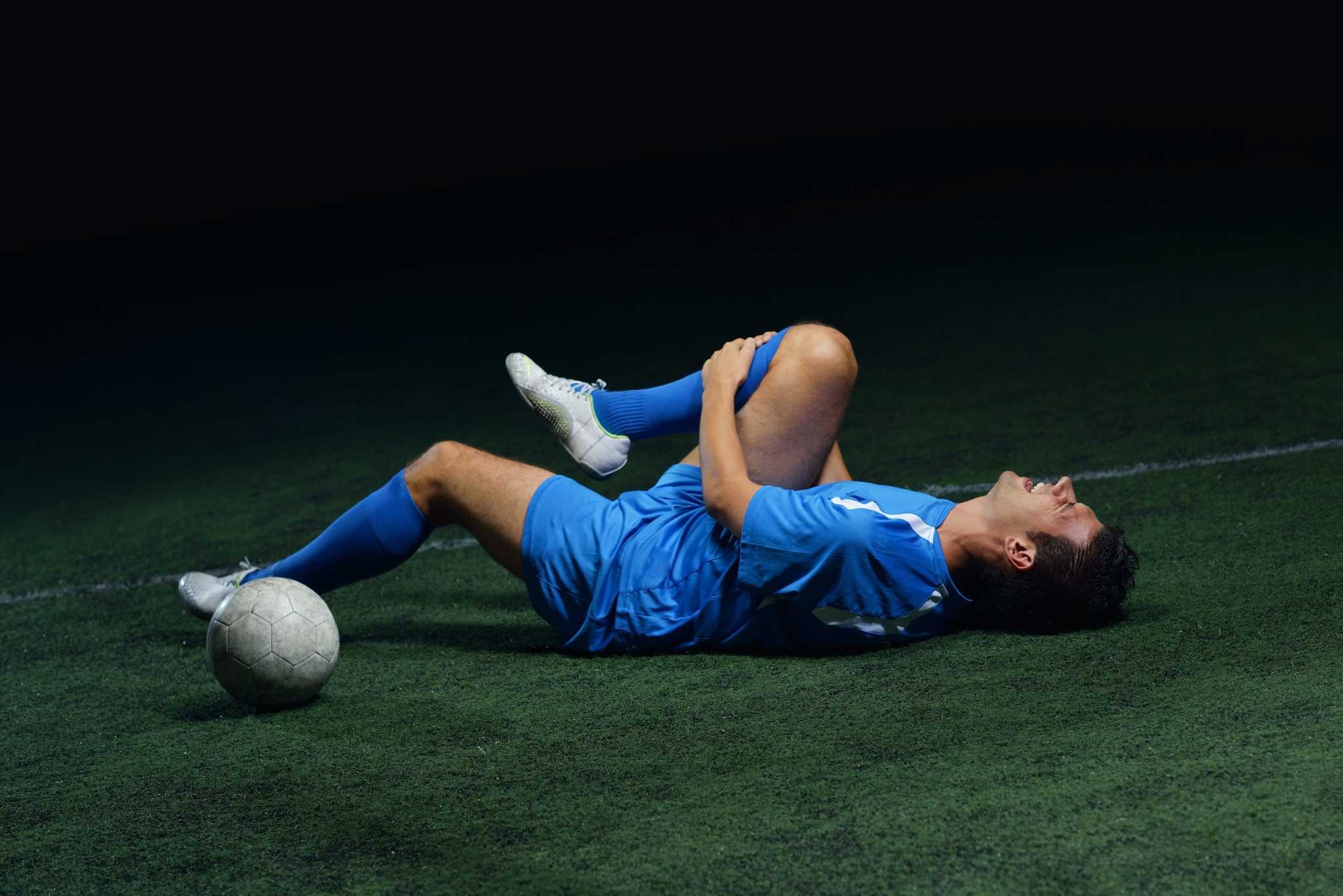You beat three players and dribble towards goal.
Adrenaline surges through your body. You know scoring would impress the scouts that are here to see you play.
You look up and see the goalkeeper charging your position.
You hear a pop and you fall over in agony. A defender has slammed into you.
You clutch your knee and yell. Your season is over. You’ve torn your ACl.
Soccer injuries can jeopardize or ruin a career.
It’s impossible to prevent every injury, but you can greatly reduce the chance that you will get injured.
Here are 8 tips to prevent soccer injuries:
8 Tips to Prevent Soccer Injuries
1. Always Warmup
A basic warmup will greatly reduce injuries.
A good warmup gets your blood flowing and prepares your muscles for playing soccer.
We get it. You want to play as soon as possible. But warming up for 20-30 minutes beforehand may prevent career-ending injuries. It’s worthwhile.
See our article, 7 Soccer Warmup Drills.
2. Become Flexible
Studies have shown that performing static stretches before warming up can actually increase the rate of injuries.
That’s why we recommend an active warmup instead (see tip 1).
However, flexibility can still help prevent injuries. To develop flexibility, stretch after you play.
See our article, 6 Great Soccer Stretching Exercises.
3. Correct Quad/Hamstring Muscle Imbalance
Many soccer players have overdeveloped quads compared to their hamstrings.
This can result in numerous injuries including an ACL tear. Your hamstrings should be at least 70 percent as strong as your quads.
If you have weak hamstrings, you need so strengthen them using exercises.
Deadlifts and hamstring curls (on a machine or using ankle weights) are two great exercises for developing strong hamstrings.
4. Use Your Body
Your likelihood of getting injured increases if you get knocked around easily by other players.
Learn how to shield so you can protect yourself.
Develop as much upper and lower body strength as possible. The stronger you are, the harder it will be for other players to knock you down.
Strong muscles also protect your ligaments so you can take more punishment without getting hurt.
5. Dribble in Front of Players
Get in front of every player you beat.
It’s impossible for a player to cause harm from behind you (unless he or she commits a serious foul, which is unlikely).
Most fouls that lead to injuries occur when an opposing player is at your side.
This technique will also make it harder for defenders to catch up with you and steal the ball.
6. Use Your Arms for Protection
Using your arms is vital for injury prevention.
You will be harder to tackle when you use your arms properly. Use your arms to create some extra space between you and the player.
In addition, touching other players with your arms will help you determine where they are so you can avoid them and shield more effectively.
7. Take Time Off
If you don’t give your muscles time to rest, they will got worn down and injuries will occur.
Rest is vital when you have an existing injury. A minor injury can become serious if you don’t rest.
Taking time off sucks, but you will have to take more time off tomorrow if you don’t rest today.
8. Pass the Ball
I (Jake) have torn both of my ACls. Each time I tore them I had beaten multiple defenders.
The longer you dribble for, the more likely you will get fouled. The more you get fouled, the more likely you will get injured.
When you beat defenders they often get angry and foul you. They want to recover their pride and stop you from making a good play.
Getting in front of the player you beat helps prevent soccer injuries (see tip 5). Remember, however, that defenders have the advantage because dribbling slows you down.
If you want to avoid a nasty tackle, pass the ball off before they catch up or you face the next defender. You can also stop dribbling and shield.

